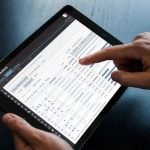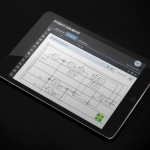| features: claim management | details |
|---|---|
| creation / import of orders | Purchase orders can either be imported via an interface to an ERP system or entered manually. The following order master data can be displayed, for example: Name of the order, order number, company, type of order, description, etc. |
| claim registration (also ÖNORM compliant) | The claim filing consists of two successive sections: Submission according to the reason and submission according to the amount. A standard-compliant (ÖNORM) processing is possible.
The areas “Submission according to reason” or “Submission according to amount” can be saved as a draft. The visibility of the fields depends on the assigned role for the project participant. Any files can be uploaded as attachments in each field. Automatic notifications are sent by the system to the project participants according to their role depending on the possible actions. |
| multiple deadlines | Various deadlines can be set for the claim application: Deadline until submission according to the reason / Deadline for submission according to the amount / Deadline for examination according to the reason / Deadline for examination according to the amout / Deadline until commissioning. |
| attachment of documents | Any file can be uploaded as an attachment in any area of the claim submission or processing. |
| workflow-supported | Claims can be sent easily through individually defined workflows including deadlines. The projectnetworld Workflow Designer makes it possible to map even the most complex processes and adapt them during operation. Alternatively, you can use a template from our extensive pool. In both cases, you can configure your claims with just a few clicks and adapt them to your requirements. Or use our turnkey addendum management module. |
| history | The unchangeable history makes it possible to trace at any time who processed which tasks and what decisions were made. |
| multi-level claim audit (examination of the reason and the amount) | A level-based claim check has been systematically deposited: first on the reason and then on the amount. |
| private and public review comments | Private and public review comments create the basis for a joint handling of claims on the platform.
The dynamic display of the latest public review comments in various overviews provides a quick overview of the latest negotiation results. |
| claim processing using to-dos | Individually required persons in the course of the claim check (e.g. experts,…) can be easily integrated into the decision-making process using to-dos. |
| automatic notifications | Automatic notifications are sent by the system to the project participants according to their role, depending on the possible actions. |
| evaluations of claims | Comparison and evaluation of service changes (submitted vs. checked) can be created via convenient check masks. |
| claim-specific rolls | By activating the Claim Management module, standard roles are automatically enabled. The authorizations of these roles can be individually adapted to the project requirements. Other roles that already exist in the project can also be configured for the Claim Management module. The permissions of the module are controlled down to the field level. The visibility of the fields during supplement registration and processing depends on the role assigned to the project participant. |
| Cross-sectional features – claim management | details |
|---|---|
| various sorting and filter functions | The various overviews in our claim management module can be individually configured and saved with the help of various filter and sorting functions. The following views are available: Orders, All claims and Claims to the order. |
| authorization concept | The authorization concept primarily serves to protect data and allows users to access only those objects, e.g. folders and documents, for which they have authorization. The authorization system is controlled via module rights and object rights and can be implemented on a person-related and role-related basis. The following authorization levels have already been defined: View, Change, Create, Delete, Change permissions. |
| standard export | In principle, there is also an export in the form of a CSV or PDF file in all views of the MKF module. |

